Due to ever-rising home prices, it’s now next to impossible to put together the cash necessary to buy a home outright. Unsurprisingly, house loans have grown in popularity as a solution to this problem. These loans allow borrowers to spread out the cost of their property over a longer period (often 20 or 30 years) and make more manageable monthly payments.
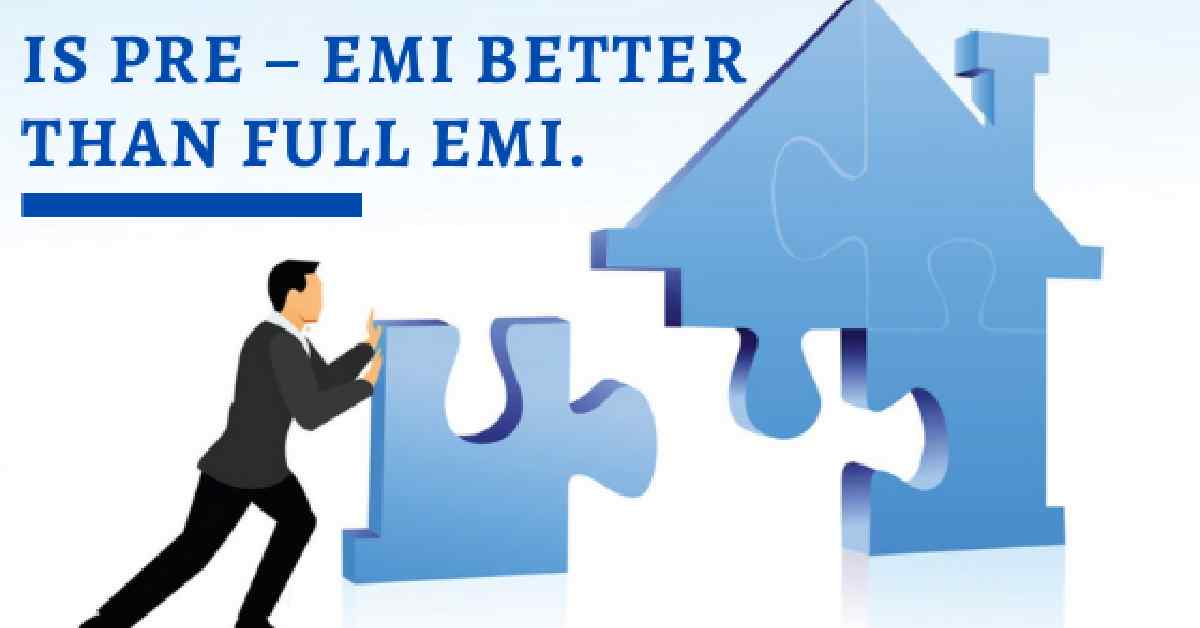
Things we covered for you
There are two distinct forms of EMIs, Pre EMI and Full EMI. And as a borrower, you must determine whether the choice is more advantageous for you: Pre EMI Vs Full EMI.
In this article, we will further compare Pre EMI and Full EMI, their tax benefits, interest rates, repayment tenure, impact on loan components, and impact on your finances and understand which options you must choose.
What is Pre EMI?
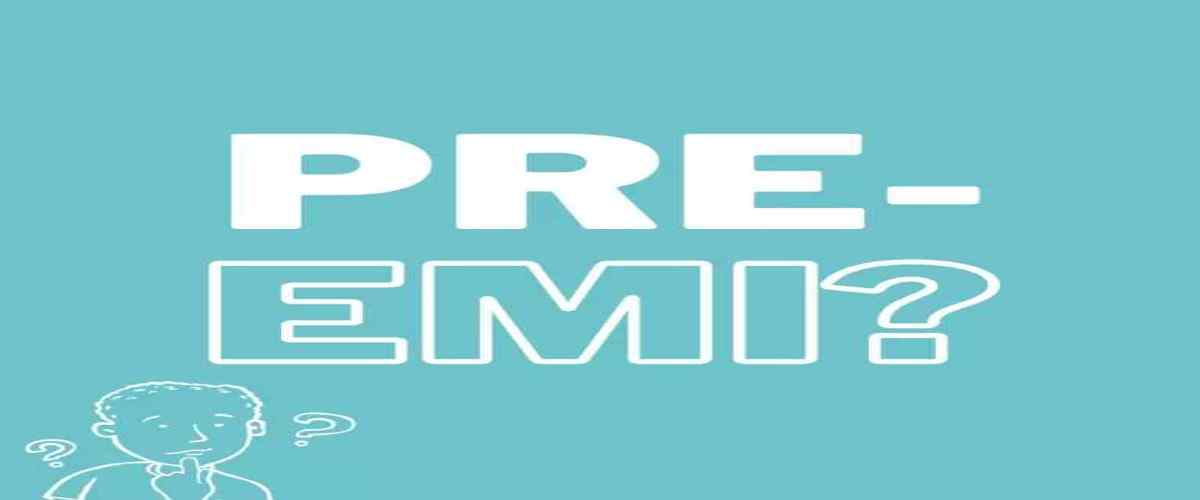
Payment of interest accrued on the loan before the initiation of the EMI is called Pre EMI. During the time that the structure is being built, this sum is paid. When the building is finished, it will be over.
Read: Types of Home Loans Available in India
The interest payments do not reduce the principal loan amount. Hence the Pre EMI amount is smaller than the entire EMI amount. This is because loan terms do not include the Pre EMI period.
Let’s look at an illustration to understand this better.
Suppose Mr Arjun Aggarwal applies for a home loan at XYZ Bank and is approved for Rs. 30,00,000. Mr Arjun Aggarwal wants to buy a property currently in the building phase. If Mr Aggarwal opts for the Pre EMI plan, the loan will be disbursed in several instalments, the first of which will be for Rs. 10,00,000.
The borrower only has to pay a Pre EMI of Rs.10,000 per month (Rs.10,00,000 x 12% / 100 = Rs.1,20,000 / 12 = Rs.10,000) because only a portion of the total loan amount sanctioned has been paid. If the borrower wants to take out another loan of Rs. 5,00,000 after waiting six months, he will have to pay a Pre EMI of Rs. 5,000 (Rs. 5,00,000 x 12% / 100 = Rs. 60,000/12 = Rs. 5,000).
After Mr Arjun Kumar receives final approval for his loan amount, he will begin making his actual EMI payments (consisting of principal and interest).
What is Full EMI?
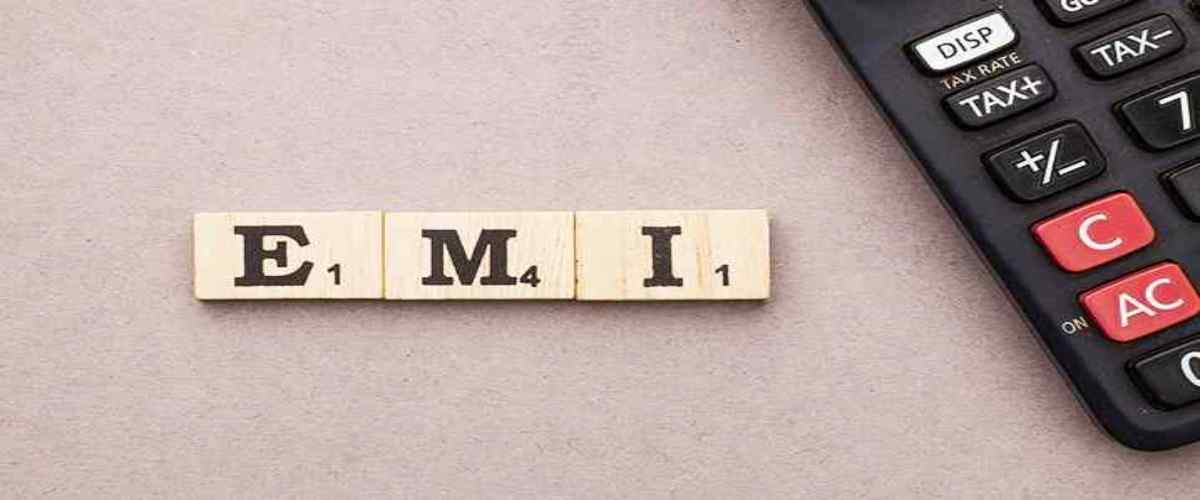
When a borrower pays the Full EMI amount, they have paid the entire EMI amount due after the original loan money has been disbursed. In this case, the borrower may receive partial or full disbursement of the principal amount, but they still opt to pay the Full EMI each month.
If you want to repay by EMI, you must pay the Full EMI and not just the funds that have been released to you. Therefore, in light of the above example, we can simplify Full EMI by saying:
Suppose Mr Arjun Kumar is interested in purchasing a home, but there is no building. At this point, he can decide whether or not to receive the entire loan amount at once.
The borrower decides to pay the contractor the first instalment of building costs with a disbursement of only Rs. 4,00,000. Despite the fact that XYZ Bank has only paid out Rs. 4,00,000 of Mr. Aggarwal’s entire loan amount of Rs. 30,00,000, Mr. Aggarwal makes the decision to pay the entire EMI that is outstanding on the loan.
Read: BOB Home Loan Calculator – Understand your Home Loan Better
With a loan amount of Rs. 30,00,000 and a repayment term of 30 years, the borrower’s EMI would be Rs. 30,858 a month if XYZ Bank provided the loan at the stated interest rate of 12%.
The principal and interest are combined to reach this monthly payment. Mr Aggarwal has elected to have the loan amount disbursed in instalments; nevertheless, he must pay the whole EMI amount if he goes for the Full EMI arrangement.
[widget_homeLoan_checkEligibility_form]
What is the Difference – Pre EMI Vs Full EMI?
- Loan disbursal–When a loan amount is paid out fully at once, the borrower will typically choose the Full EMI payment option. However, when the full amount of the loan is disbursed in portions, the Pre EMI option is typically the one that is selected.
- Interest rate–In the case of the Pre EMI option, the interest is computed based on the principal loan amount. In contrast, in the case of the Full EMI option, the interest is computed based on the loan amount paid to the builder.
- Loan payback tenure–When compared to the Pre EMI option, selecting the Full EMI plan results in debt repaying much faster. This is because the monthly instalments under the Full EMI plan contain a bigger share of the principal amount.
- Instalment payment plan, or EMI–In the case of the Pre EMI payment option, the beginning of the construction process marks the beginning of the monthly payments. At the same time, the Full EMI option’s monthly payments don’t begin until after the property is finished being built and the owner takes possession of it.
- Influence on various aspects of the loan–When choosing the Full EMI form of payment, the total sum owing and the length of time remaining until it is fully paid are both reduced with the payment of every monthly instalment. In contrast, the Monthly Instalment Payments that are made using the Pre EMI arrangement do not have any influence whatsoever on either the principal amount, the period it will take to pay back the loan, or the interest rate that is applied to the loan.
- The reselling of property–If the borrower chooses to go with Pre EMI, they will be able to sell the property immediately after it is finished being built or within a few years at the very most. On the other side, customers who have chosen to pay their mortgage in full using the Full EMI option will be prohibited from selling the property in question for a predetermined amount of time.
- Influence on fiscal situation–Since the borrower is responsible for paying only the interest during the pre-construction period. Pre EMI may be more financially manageable than Full EMI.
Pre EMI Tax Benefit Vs Full EMI Tax Benefit
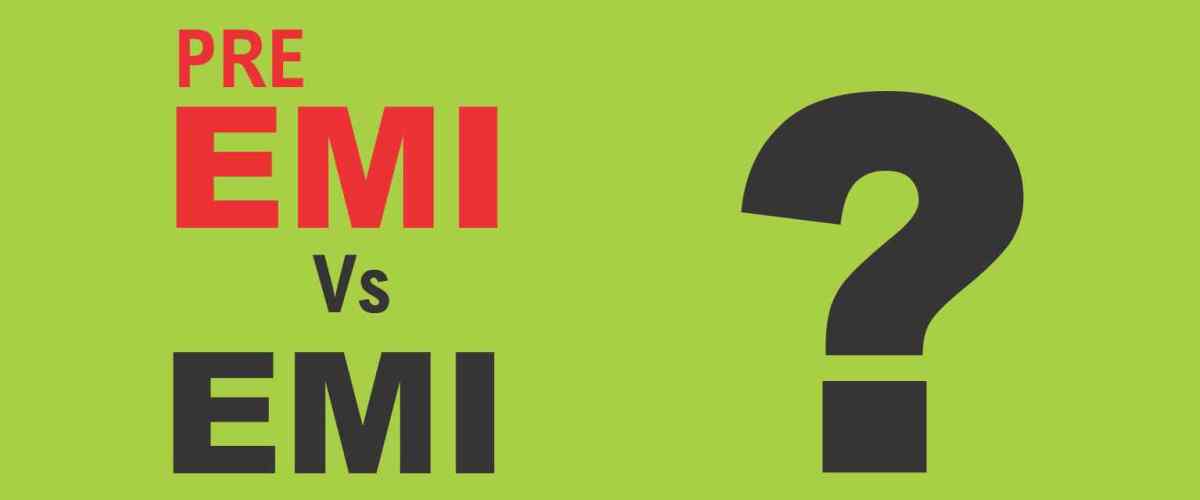
There is no difference in the tax benefits between pre-EMI and full-EMI home loan repayment plans. The borrower cannot take a tax deduction for the building’s construction costs.
Read: Ultimate Guide to SWP: Get Secure Savings with SWP
However, all interest payments (whether determined by the Pre EMI or Full EMI method) will be added together after ownership of the property has been transferred to you. For this reason, it would be possible to spread the deduction out across five equal instalments. To submit a request for a tax deduction according to Section 24 for these payments, you have until the end of the next five financial years.
Section 80C limits the annual tax deduction for principal payments to INR 1.5 lakhs. This limit has been set up to prevent overpayment of principal.
The interest deduction permitted under Section 24 is limited to a maximum of 2 Lakhs if the property is the taxpayer’s primary residence. The amount of rental or lease properties, however, is not limited in any way.
There isn’t any noticeable distinction between the tax advantages provided by the Pre EMI and Full EMI processes. Because of this, the tax benefit should not play a decisive role in picking one strategy over the other.
What are the Best Conditions for Choosing Full EMI?
- For properties, you intend to hold for several years or more.
- Whenever you expect to make a timely loan payment.
- If you want to take advantage of tax breaks as soon as the repayment term begins, you must do it before the end of the year.
- Whenever there will be a pause in building due to an expected delay.
- When you do not have access to any other investment opportunities that are more advantageous.
What are the Best Conditions for Choosing Pre EMI?
- When your available funds are restricted, you need to pay rent in addition to the EMI payment.
- Those who intend to sell their property soon after its completion.
- If you plan on selling the land and house as soon as they are finished being built.
- This is when money is tight, and you need a loan immediately.
- When the margin between Full EMI and Pre EMI is large, you’d like to invest it for higher returns.
Who Should Choose Pre EMI?
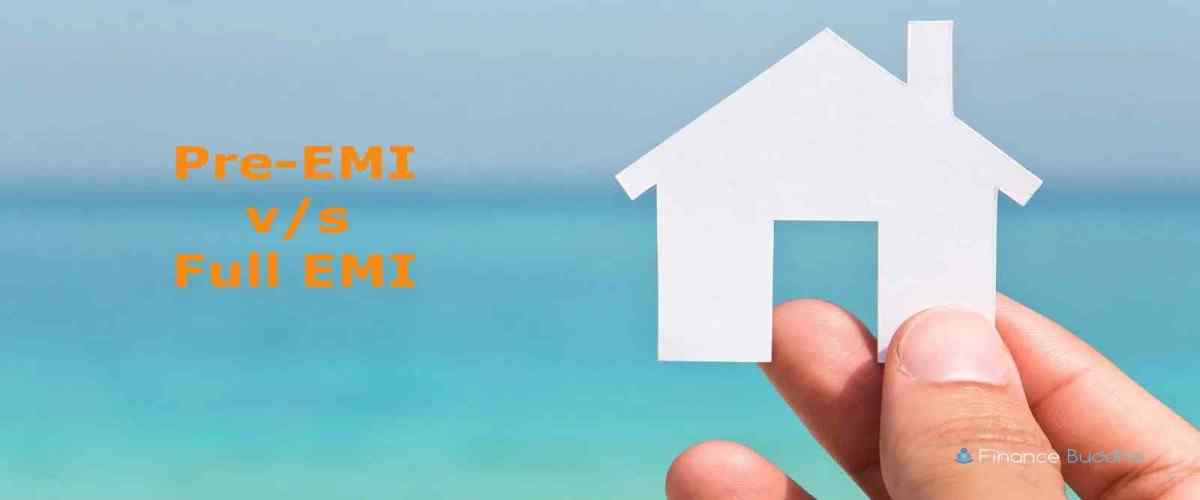
Those who want to save up ahead of the EMI payment might do so during this time and put their money into investments that will yield a healthy return. Which repayment plan to select can be influenced by calculating the opportunity cost of the funds that must be paid as full EMI vs that which can be saved and invested in a decent savings scheme.
Let’s say the total EMI is Rs. 35,000, and your share of the interest is Rs. 4,500. The borrower can reinvest Rs. 30,500 and receive stable profits while just making one Pre EMI payment of Rs. 4,500. As a result, this can be saved up and used in the EMI later.
Those who plan to flip the property as soon as construction is finished will also benefit from the Pre EMI option.
Pre EMI payment is the greatest alternative for those waiting for a change in income capability or who cannot afford to pay full EMI.
Who Should Choose Full EMI?
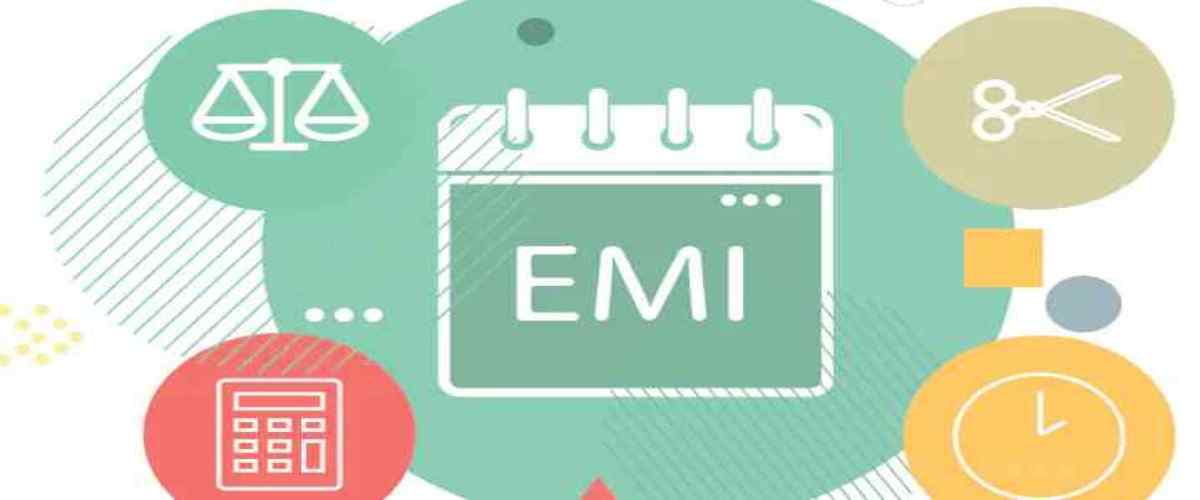
Full EMI payments of the house loan are recommended for those who intend to have the loan paid off by the time they take possession of the property.
Even individuals who are vulnerable to building delays can benefit from this choice. However, Pre EMI payments would need to be made for a longer time, increasing the overall cost of the loan.
Pre EMI Vs Full EMI: Which One is Better?
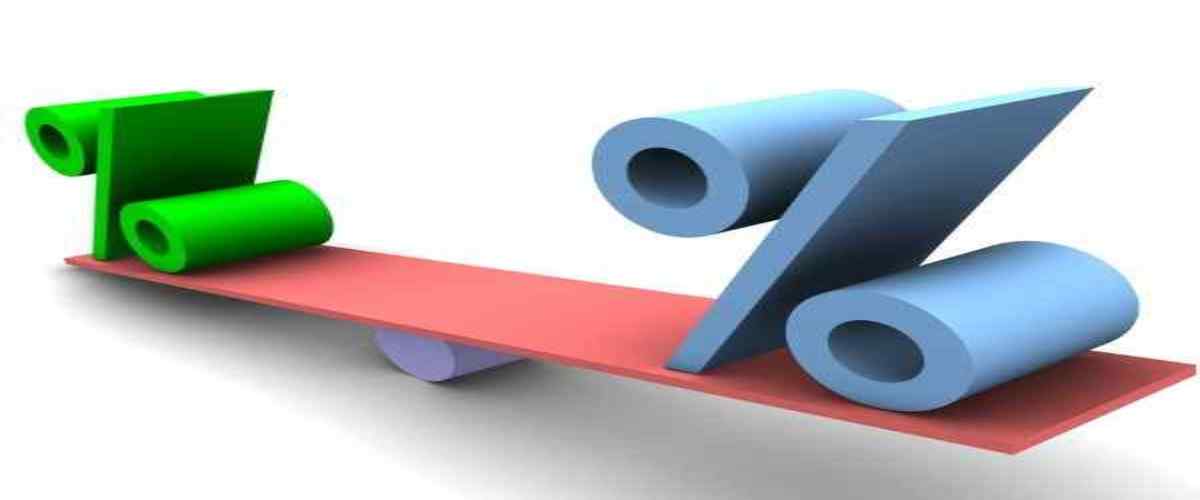
The response to this query will depend on the priorities you place on your spending and the financial resources at your disposal. You should opt for Pre EMIs if you feel insecure about paying a Full EMI payment before you take possession of the property. Pre EMIs can only be useful if you think you’ll be able to pay part of the EMI amount.
However, it would be best if you kept in mind that you will only be required to pay interest during the Pre-EMI period, so the total amount owed will remain unchanged.
To add insult to injury, your Pre EMI interest payments alone could add thousands of rupees to your loan balance. Also, because the Pre EMI period is not factored into the total loan term, you will be working on your loan for longer.
As a result, you save time and money, which is why full EMIs are a great option.
House loans have grown in popularity as an alternative to buying a home outright, which is now next to impossible due to rising home prices. However, there are two distinct forms of EMIs, Pre EMI and Full EMI, and it is important to understand the difference between them.
Pre EMI involves paying the interest accrued on loan before the actual initiation of the EMI. In contrast, Full EMI involves paying the entire EMI amount after the original loan money has been disbursed.
The differences include loan disbursal, interest rates, loan payback tenure, instalment payment plan, influence on various aspects of the loan, and influence on the borrower’s financial situation.
So if you’re looking to purchase a home, use NoBroker. They can help you avoid scams, find the right home, negotiate the best price, and save time in taking a loan. And NoBroker will help you choose which is a better option for you in Pre EMI vs Full EMI.

FAQ’s
A1: An EMI, or equated monthly instalment, is a fixed amount of money you pay for your loan every month. The payment includes the principal amount and the interest on the outstanding loan.
A2: A Pre EMI is an instalment you pay towards your loan before you have actually received the full amount. The main drawback of a Pre EMI is that it can strain your finances if you cannot make the full payment when it is due. A Pre EMI may also accrue interest faster than a regular EMI.
A3: There is no right or wrong way to repay a loan; Pre EMI and Full EMI are viable options, but it all depends on the borrower’s ability to make timely payments and assess his other financial obligations.
A4: By dialling the bank’s phone banking lines or going to the closest loan centre, you can submit a request to start the EMI for your home loan.
A5: Only after the building of the property is complete can you begin to claim a tax deduction on the Pre EMI of your home loan. The total interest paid during the construction period is eligible for a tax deduction, which can be claimed in five more years in five equal instalments.














